#Cycladic civilization
Explore tagged Tumblr posts
Text

Hatsune Miku as a Cycladic idol from the Neolithic period. Reference used:

#vocaloid#greece#hatsune miku#cyclades#miku worldwide#miku world tour#cycladic idol#cycladic#cycladic civilization#greek history#bronze age aegean#bronze age#neolithic#artists on tumblr#tagamemnon#miku through the ages
698 notes
·
View notes
Text
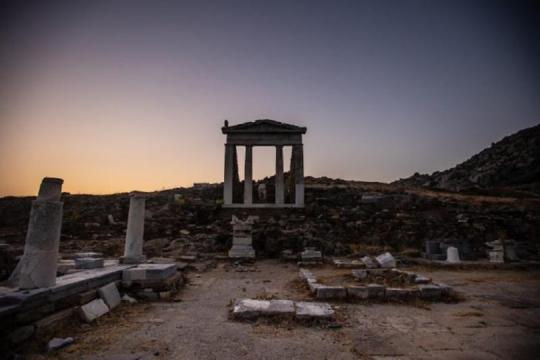
Το εμβληματικό νησί της Δήλου,κοσμοπολίτικο κέντρο της Μεσογείου κατά την αρχαιότητα σήμερα πια ανοιχτό μουσείο...
#Δήλος#Κυκλάδες#νησί#ιερό νησί της Δήλου#αρχαιότητα#ιστορία#Delos island#Greece#antiquity#ancient history#ancient Greece#open museum#ruins#Cyclades#Cycladic civilization
9 notes
·
View notes
Text
Just clarifying the Cyclades islands are around 220 and about 33 of them are the currently inhabited ones.
Prehistoric Figurine of a Harp Player, from the Cyclades (Greece), c. 2700-2300 BCE: this figurine was shaped from a block of solid marble and then slowly sanded into form using pumice and emery
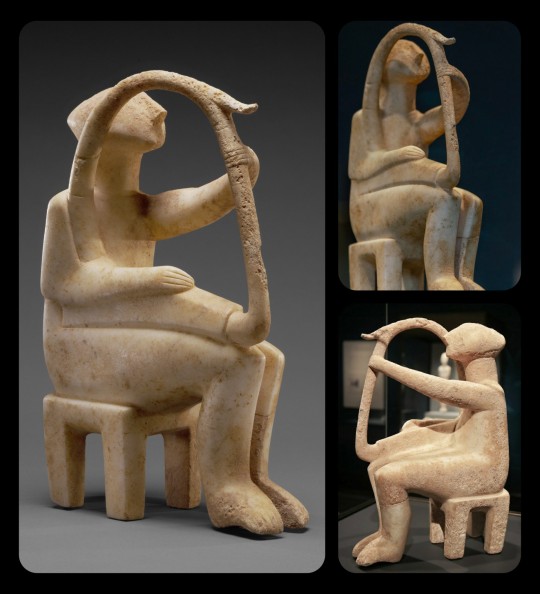
The figurine depicts a musician with a frame harp, an instrument that originated in the Near East and then later spread to the peoples of the Aegean. A sound box forms the section along the base of the instrument, and a small protrusion can be seen near the top of the harp's frame; some experts have argued that this protrusion might represent an ornamental carving of a waterfowl's head, while others argue that it represents a musical extension that facilitates the projection of sound (a feature that often appears on the stringed instruments of the ancient Near East).
This piece measures 35.8cm (about 14 inches) tall.
Musical performances like this are rarely depicted in Cycladic artwork. Depictions of male characters are similarly rare, representing only 5% of the Cycladic sculptures that are known to exist. When male figures are depicted, however, they are frequently shown playing musical instruments, as seen here.

Figurine of a Harpist, c. 2800-2700 BCE: a similar example of a Cycladic sculpture that features a musician with a frame harp
The Museum of Cycladic Art provides a more detailed explanation of the process by which these figures were created:
As we can deduce from the few unfinished figurines that have been discovered so far, the first step in the process was to roughly shape the raw piece of marble into a figure by the impact of a mallet. Emery powder was then used to abrade the surface until it obtained the desired shape and size. Once the desired shape was achieved, the surface was smoothed carefully before the fine work of carving the details started. At the end, the figurine was polished to a high degree that is still amazing.
And according to The Met:
Many of these figures, especially those of the Spedos type, display a remarkable consistency in form and proportion that suggests they were planned with a compass. Scientific analysis has shown that the surface of the marble was painted with mineral-based pigments—azurite for blue and iron ores, or cinnabar for red.
The Cycladic Islands (also known as the Cyclades) are a group of about 30 separate islands in the Southwest Aegean, off the coast of mainland Greece. These islands contain a wealth of natural resources, including marble, emery, pumice, obsidian, and an assortment of precious metals. The prehistoric peoples of the Cyclades made use of these resources for many different purposes, but the marble figurines/sculptures that they crafted during the Bronze Age are perhaps their most famous creation.
The vast majority of these figurines are stylized depictions of the female form. The cultural significance of the sculptures remains unclear; they may have simply been created as decorative pieces/artwork, without any additional function, or they may have been used as fetishes, totems, religious idols, grave goods, or votive offerings.
Sources & More Info:
The Getty Museum: Figurine of a Harp Player
The Met: Cycladic Harp Player
The Met: Early Cycladic Art and Culture
The Museum of Cycladic Art: Techniques
#archaeology#history#ancient history#prehistoric art#Cycladic art#cycladic civilization#Greek history#Cyclades#Cycladic islands
1K notes
·
View notes
Text

Been Reading some stuff about Bronze Age Greece, I've drawn these guys :D The Cycladic culture was a Bronze Age culture (c. 3100–c. 1000 BC) found throughout the islands of the Cyclades in the Aegean Sea.
Being a Culture between islands I decided to make them dolphins , (the current national animal of Greece!) to make then swim around the islands !

The Minoan civilization was a Bronze Age culture (3100 – c. 1100 BC) which was centered on the island of Crete. (The History of the Minoans)
Decided to make them both a Minotaur and a Centaur!

Mycenaean civilization was the last phase of the Bronze Age in ancient Greece, spanning the period from approximately 1750 to 1050 BC. It represents the first advanced and distinctively Greek civilization in mainland Greece with its palatial states, urban organization, works of art, and writing system.
Kept them as a Cyclop for Cyclopean masonry: "...Pausanias attributes all of the fortifications of Tiryns and Mycenae, including the Lion Gate, to the Cyclopes..."
(Also made them bigger since they conquer the rest, The EPIC musical Cyclop saga hyped me)

#countryhumans#countryhumans mycenae#countryhumans cycladic culture#countryhumans minoan civilization
31 notes
·
View notes
Text

A CYCLADIC MARBLE FOOTED CUP EARLY CYCLADIC II, CIRCA 2700-2200 B.C.
#A CYCLADIC MARBLE FOOTED CUP#EARLY CYCLADIC II#CIRCA 2700-2200 B.C.#marble#ancient marble#ancient artifacts#archeology#archeolgst#history#history news#ancient history#ancient culture#ancient civilizations#cycladic culture#cycladic history#cycladic art
32 notes
·
View notes
Text
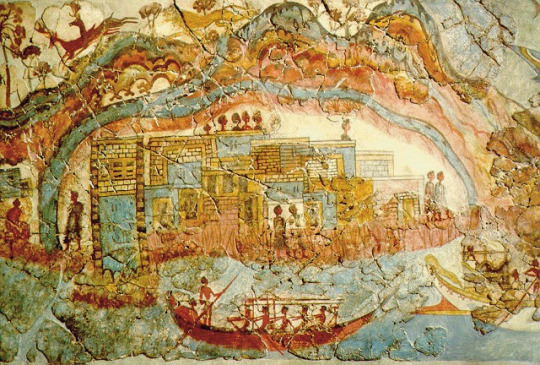
Fresco from the bronze age in the minoan town Akrotiri, Santorini, Greece
Source: http://scihi.org/spyridon-marinatos-akrotiri/
267 notes
·
View notes
Text


Helena Mycenae, Nation of Greeks
Welp, I gave in and drew her! Some things there are spoilers for my fic, The foam that rolls between the waves, so be aware under the cut.
For symbolism I have the pomegranates as an important symbol for ancient greece, on the top right corner I've drawn cycladic statues, minoan patterns and at the end, ancent greek trims.
The colors are based on red amphorae and the eyes on Helena's hair are like the ones drawn on triremes, only green, because... she has green eyes!
The doll's names are in linear A and B! Linear A hasn't been translated, sooo it's just random symbols.
On the olive tree three dolls are hung, Helena, Minos and Delos. Delos' doll is burned, like he did, Minos' is missing its heart, like the way he died, and Helena hangs beside them, the only one remaining.
#hetalia#artwork#hws ancient greece#aph ancient greece#aph greece#hetalia oc#hws minoan civilization#hws cycladic civilization#digital art#aph ancients#ancientalia
7 notes
·
View notes
Photo

Mycenaean Civilization
The Mycenaean Civilization flourished in the Late Bronze Age (c. 1700-1100 BCE), peaking from the 15th to the 13th century BCE. The Mycenaeans extended their influence throughout the Peloponnese in Greece and across the Aegean from Crete to the Cycladic islands. They are named after their chief city of Mycenae in the Argolid of the northeast Peloponnese.
The Mycenaeans were influenced by the earlier Minoan civilization (2000-1450 BCE) which had spread from its origins at Knossos, Crete to include the wider Aegean. Architecture, art and religious practices were assimilated and adapted to better express the perhaps more militaristic and austere Mycenaean culture. The Mycenaeans came to dominate most of mainland Greece and several islands, extending trade relations to other Bronze Age cultures in such places as Cyprus, the Levant, and Egypt. The culture made a lasting impression on later Greeks in the Archaic and Classical periods, most tangibly in their myths of Bronze Age heroes like Achilles and Odysseus and their exploits in the Trojan War.
Major Mycenaean Centres
The Mycenaeans were indigenous Greeks who were likely stimulated by their contact with Minoan Crete and other Mediterranean cultures to develop a more sophisticated sociopolitical culture of their own. Major Mycenaean centres included Mycenae (traditional home of Agamemnon), Tiryns (perhaps the oldest centre), Pylos (traditional home of Nestor), Thebes, Midea, Gla, Orchomenos, Argos, Sparta, Nichoria, and probably Athens. In time, the Mycenaeans would even establish themselves on Crete and especially at Knossos, thus superseding the Minoans as the dominant culture in the southern Aegean by the second half of the 15th century BCE.
Sponsorship Message
Continue reading...
135 notes
·
View notes
Text
I always found it funny that Apollo is said to be 4000 or so years old in ToA, bc while that is really old mortal wise, it seems actually really young all things considered? I mean, he’s tens of thousands of years younger than humans on earth are, and that’s not even mentioning that half of his family was born long before humans came into existence, so they’ve all got at least like 20,000 years of life over him. That’s almost 5 times his whole life.
My fav idea regarding this is that Apollo and Artemis are the first Olympians to be born after mortals were made by Prometheus. This is kind of maybe supported in myth? Athena and Hephaestus are both active in versions of the mortal creation myth, but none of their younger siblings are shown. I like this bc I think that the younger children of Zeus (Apollo, Artemis, Hermes, and Dionysus) are connected to humans in a way that the rest of the gods are not. It’s the difference between living your whole life with mortals around or having them only show up once you’ve already been around for centuries.
I also like the (probably unintentional) implication Rick made about Apollo and Greece. Doing the math, it seems like Apollo is born sometime in the 2590’s B.C.E, tho it’s hard to be certain with the riordanverse’s mess of a time period. Regardless, he was born around the same time we see major civilization pick up in the Cyclades. Some of our first art pieces from Ancient Greece actually come from this exact time period (there are figurines from Syros and Keros that date to 2700-2300 B.C.E. The one from Keros is even a male lyre player!) This implies that Artemis and Apollo’s birth coincided directly with the birth of Greece. Good for them!
This all also adds to my favorite theory that riordanverse Apollo is the world’s most specialist little boy that connects mortals and gods and is super powerful and also awesome and not like other girls and he could totally overthrow his father for funzies and the fates would applaud him for it.
#my blorbo was born alongside the birth of Ancient Greece so your blorbo has nothing on him#trials of apollo#toa apollo#lester papadopoulos#sunny speaks#headcanon#long post
435 notes
·
View notes
Text
Splatoon: The Vestigial Species - Design Ideas (Europe)
If you have not viewed the main post first, please do so. Otherwise, here is a list of archaeological cultures which you are free to choose from to use as an inspiration when designing your human society!
Paleolithic/Mesolithic
Bohunician Culture
Aurignacian Culture
Gravettian Culture
Epigravettian Culture
Solutrean Culture
Magdalenian Culture
Azilian Culture
Maglemosian Culture
Kongemose Culture
Ertebølle Culture
Dnieper-Donets Culture
Pitted Ware Culture
Neolithic
Sesklo Culture
Neolithic Greece
Starčevo–Körös–Criș Culture
Vinča Culture
Karanovo Culture
Gumelniţa Culture
Linear Pottery Culture
Stroke-Ornamented Ware Culture
Rössen Culture
Lengyel Culture
Cardium Pottery Culture
Cucuteni-Trypillia Culture
Michelsberg Culture
Funnelbeaker Culture
Tisza Culture
Globular Amphora Culture
Ozieri Culture
Baden Culture
Bronze Age
-Pastoral
Samara Culture
Khvalynsk Culture
Repin Culture
Yamnaya Culture
Catacomb Culture
Vučedol Culture
Poltavka Culture
Fatyanovo Culture
Abashevo Culture
Sintashta Culture
Srubnaya Culture
-Sedentary
Corded Ware Culture
Bell Beaker Culture
Únětice Culture
Tumulus Culture
Nordic Bronze Age
Terramare Culture
Apennine Culture
Wessex Culture
Atlantic Bronze Age
Hallstatt Culture
Urnfield Culture
Helladic Culture
Cycladic Culture
-Civilizations
Minoan Civilization
Mycenaean Civilization
#splatoon#splatoon 2#splatoon 3#splatoon 4#splatoon headcanon#splatoon fandom#splatoon art#splatoon fanart#fan concept#art contest#collaborative projects#art collab
5 notes
·
View notes
Text
For this year's Christmas gift, I decided to gift every single one of my followers and Tumblr users with all my Cycladic and Minoan drawings I've made in the entirety of 2024.
Cycladic Civilization




And here are the links: pic 1, pic 2, pic 3, pic 4
Minoan Civilization






Links: pic 1, pic 2, pic 3, pic 4, pic 5, pic 6
#tagamemnon#ancient greece#bronze age#bronze age aegean#greece#greek history#cyclades#cycladic idol#cycladic#cycladic civilization#minoan women#minoan crete#minoan#minoan civilization#ancient crete#crete#artist on tumblr#digital art
12 notes
·
View notes
Text
Two new important archeological discoveries have emerged in Greece – a gate sanctuary found at the Minoan palace of Archanes on the island of Crete and a tomb believed to date from the time of Philip II, father of Alexander the Great, found in Pthiotis, Thessaly.
The gate sanctuary at the Minoan palace of Archanes will help shed more light on the site’s religious and architectural importance, experts say.
“Archaeologist Dr Efi Sapouna-Sakellarakis continued the archaeological research to complete the image of the three-storey building, which along with Knossos [the biggest Minoan palace on Crete], played an important role in the development of the Minoan civilization,” the Greek Ministry of Culture said on October 23.
“It is a gate sanctuary, a unique element, found for the first time in a Minoan palace, outside its main entrance, in the same place where four altars have been uncovered, as well as the two arms of the stone construction of the platform, which as a whole indicate the religious importance of the place,” the ministry added.
The Minoan city of Archanes and palace complex, built around 1900 BC, lies in a small closed valley, 15 km south of Knossos palace. The site was discovered in the 1960s.
Various findings from Archanes and the wider area confirm the existence of continuous habitation. Columns, figurines and statues are examples of important art that developed in the area.
The bronze age Minoan Civilization flourished from around 3000 to 1450 BC in Crete and other Aegean islands, especially in the Cyclades. It was one of the first advanced civilizations in Europe, which left behind large building complexes, tools, works of art, writing systems, and an extensive trading network reaching both Cyprus and Egypt.
The media outlet Lamia Report reported meanwhile that on October 23, construction works at the village of Echinos, in Fthiotis, had revealed a large tomb, alleged to be a Macedonian one.
Echinos was a town in ancient Thessaly founded by the Thebans during the period of Theban hegemony. Philip II took control of Echinos to facilitate his passage from Thermopylae.
The construction works have been stopped to enable archeologists to uncover the burial monument. Objects from the tomb unfortunately have been stolen already, probably long ago.
10 notes
·
View notes
Photo

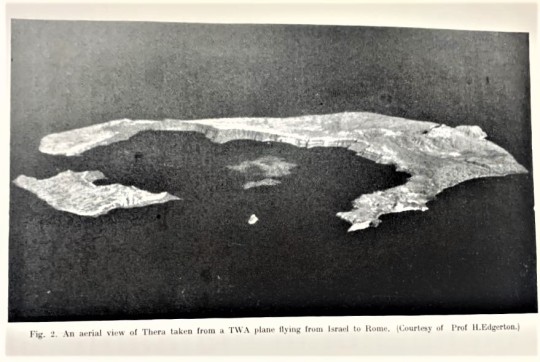


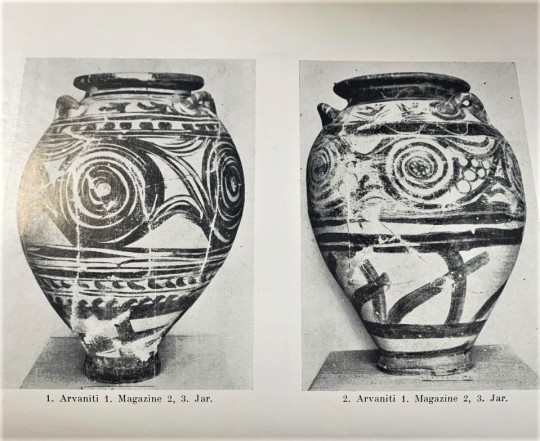
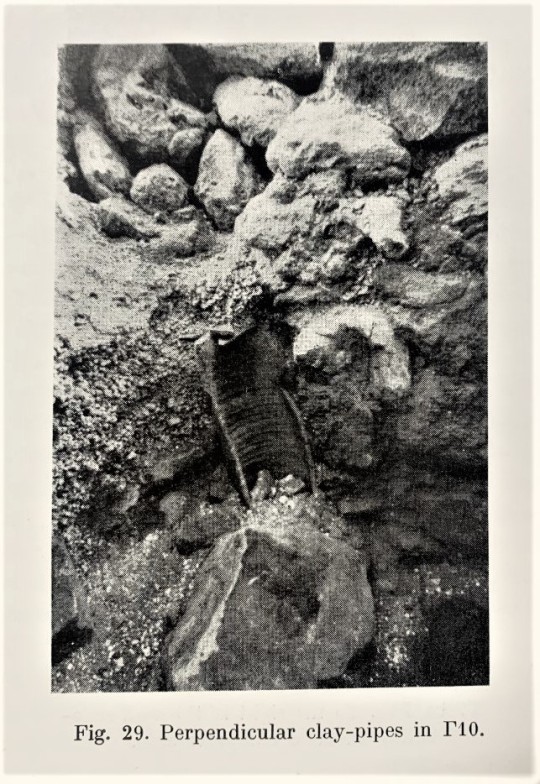
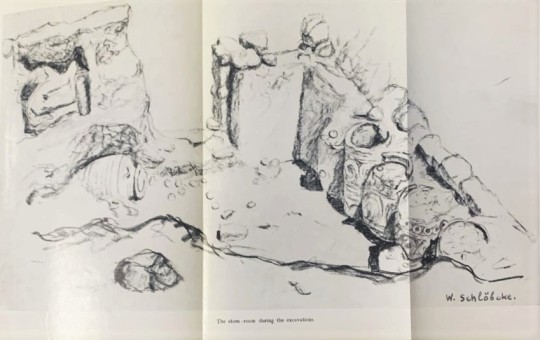

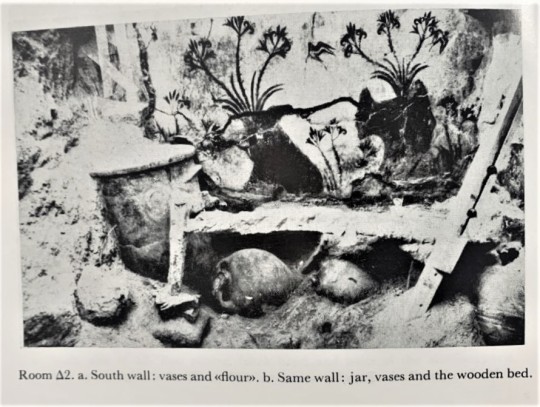
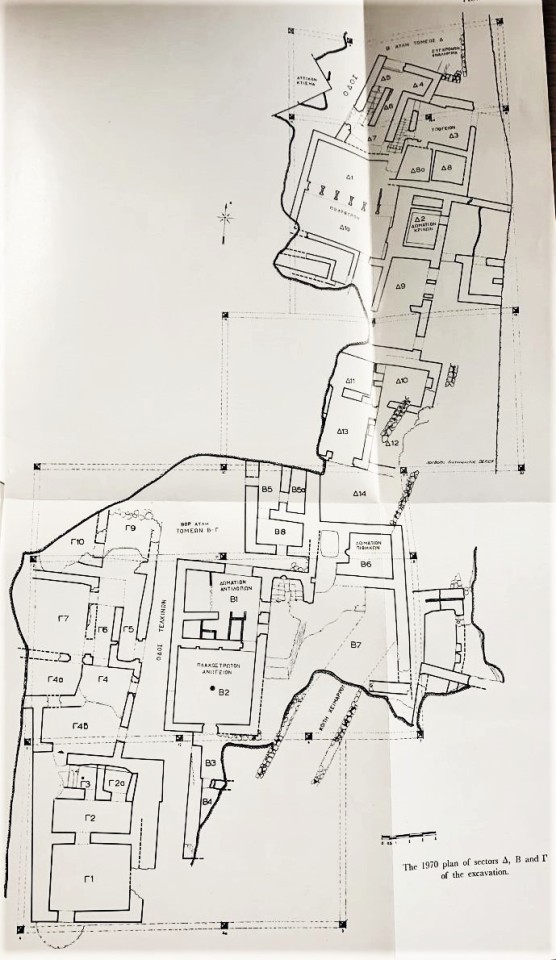
Excavations at Thera
The destruction of Pompeii by the volcano Vesuvius has become synonymous with the nature disaster of volcanic eruptions. The eruption of Vesuvius, among the deadliest in history, was the first natural disaster of its kind to have a first-handwritten account and this documented event has persisted in the public consciousness for nearly two millennia. Yet, despite being the one of the most famous and the deadliest, the eruption of Vesuvius is far from the most destructive. That honor might well go to the eruption of Thera in the 16th or 17th century BCE.
Excavations conducted on this Cycladic Island (among the Aegean Islands), such as the ones recorded in Excavations at Thera a seven-volume set of reports written by by the noted Greek archaeologist Spyridon Marinatos and published by Archaiologikē Hetaireia en Athēnais between 1967-1971, showed that during the Minoan period (2000-1200 BCE) Thera once held an integral port city. Remains showed that though the city was flourishing, its inhabitants abandoned the island for reasons that would soon become apparent to the excavators. It didn’t take long for archaeologists to discover that Thera once held an oval shape, differing greatly to the crescent it is today. Further inspection revealed that several ancient structures were far underwater, pointing to the island collapsing in on itself after their construction. It wasn’t long before the pieces were put together, leading to the discovery that Thera once held an active volcano that erupted in the Minoan period, destroying the island in its entirety.
The collapse of the Minoan civilization has been a mystery that persists to this day, yet finding this once active volcano led many to draw lines of connection between the two events. The reports written by Professor Marinatos reference this theory as near fact when describing the history of the ancient civilization. Such a theory does make a good amount of sense as this eruption would have been much greater than that of Vesuvius with estimated effects reaching all the way to China with reports of a series of harsh winters. Yet as excavations on both the Cycladic Islands and Crete continued, the date for the eruption got pushed back as the fall of the Minoan civilization crept forward. Currently the most accurate date for the eruption of Thera is 1628 BCE with some room for error while the fall of the Minoans sits between 1200-1100 BCE.
View more of my Classics posts.
– LauraJean, Special Collections Undergraduate Classics Intern
#Eruption of Thera#Thera#volcanoes#greek history#Minoan history#Cyclades#volcanic eruptions#Crete#Excavations at Thera#Spyridon Marinatos#archaeology#Greek archaeology#Archaiologikē Hetaireia en Athēnais#Archaeological Society at Athens#Classics#LauraJean
68 notes
·
View notes
Text

Kamares-style pottery - Kamares ware is a distinctive type of Minoan pottery produced in Crete during the Minoan period, dating to MM IA (ca. 2100 BCE)
Minoan art is the art produced by the Bronze Age Aegean Minoan civilization from about 3000 to 1100 BC, though the most extensive and finest survivals come from approximately 2300 to 1400 BC. It forms part of the wider grouping of Aegean art, and in later periods came for a time to have a dominant influence over Cycladic art. Since wood and textiles have decomposed, the best-preserved (and most instructive) surviving examples of Minoan art are its pottery, palace architecture (with frescos which include "the earliest pure landscapes anywhere"), small sculptures in various materials, jewellery, metal vessels, and intricately-carved seals.
2 notes
·
View notes
Text

A CYCLADIC GRAY CHLORITE PYXIS EARLY CYCLADIC II, CIRCA 2700-2500 B.C.
#A CYCLADIC GRAY CHLORITE PYXIS#EARLY CYCLADIC II#CIRCA 2700-2500 B.C.#pottery#ancient pottery#ancient artifacts#archeology#archeolgst#history#history news#ancient history#ancient culture#ancient civilizations#ancient greece#greek history#greek art#historical art
17 notes
·
View notes
Note
Hi!
So, my country's history begins at around the 7th century and at school it takes us 2 years to learn all that happened since then (and then, for whatever reason, 2 more years to do that again). And those 14 centuries feel like a lot of history. But last night I realized that (surprise-surprise) Greece exists way longer than my country. So now I wonder where on the timeline do you begin when learning history at school, how long does it take you to go from that to modern days, and does it fell like too much history?
Hi!
(if we're being accurate, greece strictly as a country in the modern sense was recognized in 1830, but yes culturally it does go pretty far back, and then in terms of being inhabited by people it goes even further)
In school here (i might be slightly off , it's been a couple years since I graduated highschool) it takes us about 3 and a half years in primary school:
Halfway through the third grade , when we have finished mythology, we start learning about the stone age, the Cycladic civilization, the minoans and Mycenaeans. In the fourth grade we do classical greece and alex the great, in the fifth Byzantium and in the final grade of primary school we do from 1500s to up until he second world war. It isn't the best of curriculums because we never really learn about the romans, the middle ages in Europe, any asian or African history at all or anything about america beyond the tea incident.
Then in junior high we repeat the same "from Cycladic civilization until the second world war" history in three years, and then in high school we repeat it all once again with the exception that at the first grade of highschool we learn a bit more about other ancient civilizations like the mesopotamians, Egyptians, Persians etc as well as a bit more about the ancient romans. 🥹👍
12 notes
·
View notes